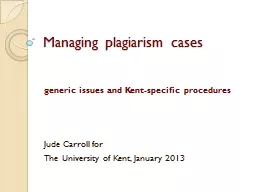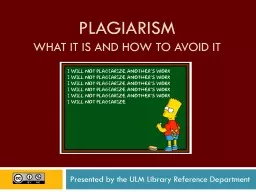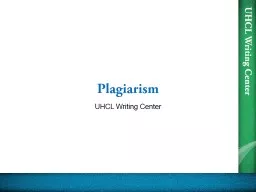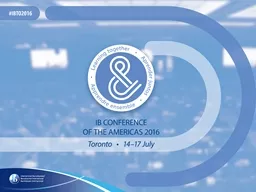PPT-Managing plagiarism cases
Author : mitsue-stanley | Published Date : 2016-08-11
generic issues and Kentspecific procedures Jude Carroll for The University of Kent January 2013 A quick intro activity Into 2s Look at the cases before you Look
Presentation Embed Code
Download Presentation
Download Presentation The PPT/PDF document "Managing plagiarism cases" is the property of its rightful owner. Permission is granted to download and print the materials on this website for personal, non-commercial use only, and to display it on your personal computer provided you do not modify the materials and that you retain all copyright notices contained in the materials. By downloading content from our website, you accept the terms of this agreement.
Managing plagiarism cases: Transcript
Download Rules Of Document
"Managing plagiarism cases"The content belongs to its owner. You may download and print it for personal use, without modification, and keep all copyright notices. By downloading, you agree to these terms.
Related Documents














